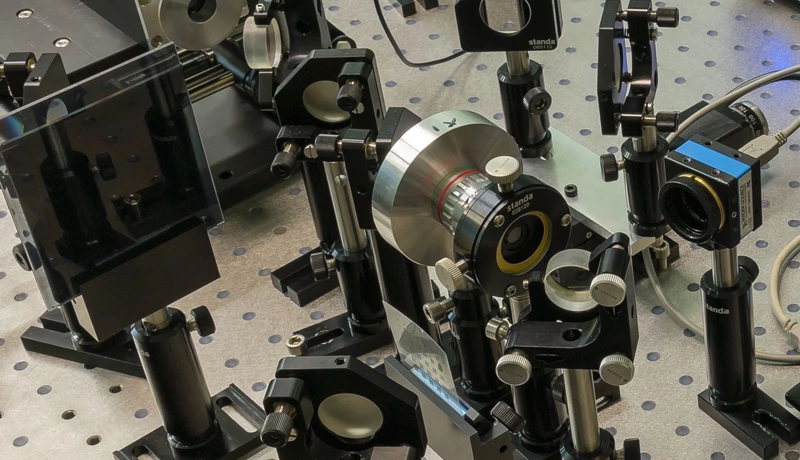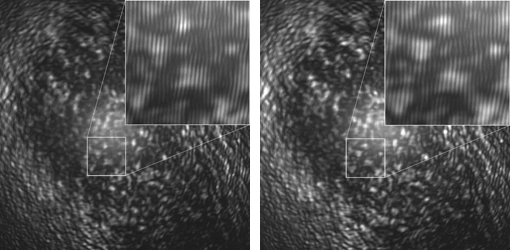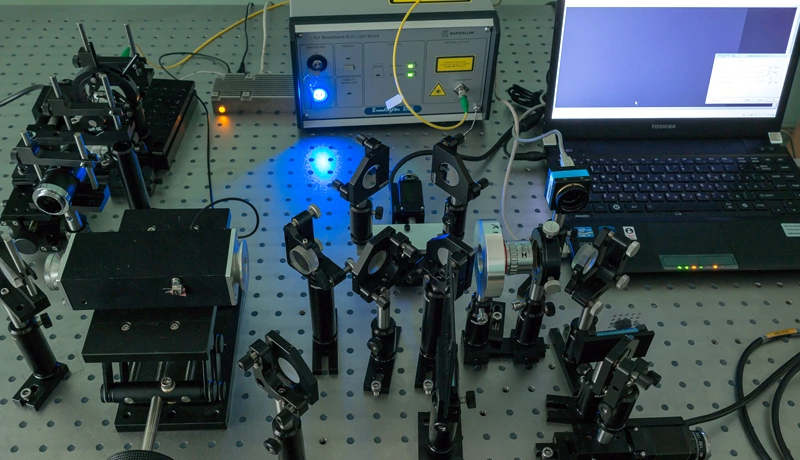Industrial Camera Captures Data for Spectral Holograms
Published on January 13, 2017 by TIS Marketing.
The imaging of transparent objects poses challenges in many fields: biology, medicine, industrial machine vision. Special coatings, specimen stains, phase imaging, structured light and multispectral imaging are just some of the techniques used to "see the unseen".
Digital holography makes use of amplitude and phase data to reconstruct 3D images and therefore offers important imaging capabilities - even of optically transparent objects. The use of additional visual data outside the standard RGB range (i.e. multispectral imaging) can also add to digital holography imaging ability to show previously unobserved structures and give additional data about materials. Due to how holographic images are created, however, challenges exist when applying the benefits of multispectral imaging to holography.

Recently, five researchers published an article about an experimental digital holography scheme consisting of an interferometer with an acousto-optic tunable filter and The Imaging Source's DMK 72BUC02 monochrome industrial camera. In using the described set up, the researchers' goal was to increase the informativeness of digital holography. Improvements in this area could prove especially significant for observing optically transparent objects. The journal article, "Spectral Holographic Imaging of Transparent Objects in Mach−Zehnder Interferometer Using Acousto-Optic Filter" was published in Physics of Wave Phenomena (Vol. 24, No. 2).
Light Wavefront Data Captured by Industrial Camera
In order to create a hologram, a coherent light source (i.e. a laser) beam is split into object and reference beams. The interference pattern from the object and reference beams is recorded, in the case of digital holography, by the camera sensor and stored digitally. This light-wavefront data is then numerically reconstructed to create a quantitative amplitude and phase images.
The coherent light needed to create a hologram is intrinsically monochromatic and in order to create multispectral holograms, image data from multiple coherent light beams of differing wavelengths are reconstructed and fused to create a multispectral hologram.
The authors write: "The set of operating wavelengths in these systems is generally limited and one cannot choose an arbitrary wavelength. At the same time, it is of interest to study a sample in a rather wide spectral range in many cases. Therefore, an urgent problem is to develop methods for recording multispectral holographic images involving quasi-continuous spectral tuning...."
Acousto-optic Filter Tunes Light: Experiment Set Up
In order to realize such a system, the authors used a broadband light source and tunable acousto-optic (AO) filter installed at the entrance of Mach-Zehnder interferometer "designed to form digital holograms of optically transparent objects in arbitrary narrow spectral intervals."

The object and reference wavefronts are spatially aligned by the beam splitter to create the interference pattern which is then recorded by the DMK 72BUCO2 in front of which a longpass filter was installed to exclude background light. The working wavelength is tuned by making adjustments to "the ultrasonic frequency applied to the AO cell."
By spatially separating the background zero order and the +1st and -1st diffraction orders, the authors achieved an off-axis digital holography scheme and were able to capture Fourier holograms from an optically transparent object as well as of a test pattern and a biological sample.
The authors write "...arbitrary spectral addressing makes it possible to obtain multicolor holographic images, which do not correspond to fixed wavelengths but allow for arbitrary arrangement of spectral components."
Digital Holography's Many Applications
Digital-holography's non-contact imaging capabilities make it uniquely suited for delicate applications: the study of cells and structures (especially in-vivo specimens) for bio-medical applications; non-destructive materials testing such as the detection of subsurface defects in metals or composites; refractive index fields within transparent media; "qualitative and precise quantitative analysis of properties of various objects in microprofile reconstruction, study of the phase structure, monitoring of stressed state, investigation of particle trajectories, microscopy, optical coherence tomography, etc."

The technique described in the paper should "increase the informativeness of holographic images" without the requirement of multiple coherent light sources and will benefit applications where "the amplitude-phase and spectral structures of transparent objects must be investigated simultaneously."
